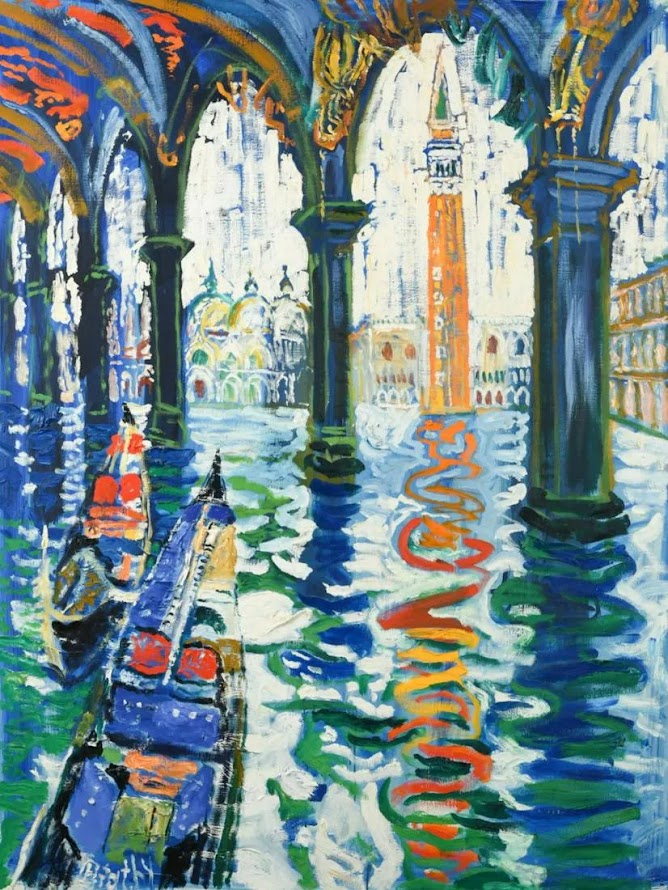Although he was accepted at the Slade School of Fine Art, Bratby attended the Royal College of Art (1951–54). His first solo exhibition, mounted at the Beaux Arts Gallery in London (1954), gained him instant popularity. For many years after his artwork appeared in the motion picture The Horse’s Mouth (1958), he was identified in the popular imagination with the film’s protagonist, a bohemian artist. Bratby was particularly known for the feverish speed at which he worked and for the thick texture of his vividly coloured, Expressionistic paintings, into which he often incorporated everyday objects. His productivity did not decline with his popularity in the 1960s, as he continued to create thousands of sketches and paintings, including hundreds of portraits. He wrote several autobiographical novels, notably Breakdown (1960), and served as editor in chief of Art Quarterly from 1987.
Please visit my other blogs: Art Collector, Mythology, Marine Art, Portrait of a Lady, The Orientalist, Art of the Nude and The Canals of Venice, Middle East Artists, 365 Saints, 365 Days, and Biblical Icons, also visit my Boards on Pinterest and my art stores at deviantart and Aaroko
Images are copyright of their respective
owners, assignees or others. Some Images may be subject to copyright
I don't own any of these images - credit is
always given when due unless it is unknown to me. if I post your images without
your permission, please tell me.
Ads are shown only to compensate the hosting
expenses.
If you enjoyed this post, please share with
friends and family.
Thank you for visiting my blog and also for
liking its posts and pages.
Please note that the content of this post
primarily consists of articles available from Wikipedia or other free sources
online.





No comments:
Post a Comment